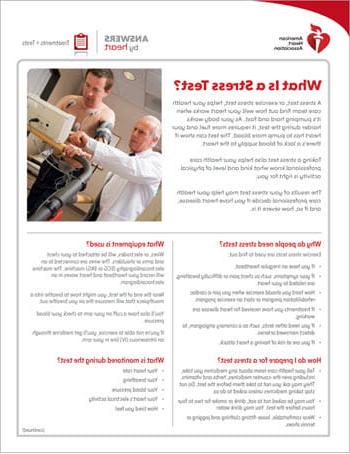运动压力测试

An exercise stress test helps your health care professional find out how well your heart handles work. As your body works harder during the test, 它需要更多的氧气, so the heart must pump more blood. The test can show if the blood supply is reduced in the arteries that supply the heart. It also helps your health care team know the kind and level of exercise that’s right for you.
When taking the test, you:
- Are hooked up to equipment to monitor your heart.
- Walk slowly in place on a treadmill or ride a stationary bicycle. Then the speed of the treadmill or the resistance on the bike is increased slowly for more exertion. The treadmill may also tilt to produce the effect of going up a small hill.
- May be asked to breathe into a tube for a couple of minutes.
- Can stop the test at any time if needed.
- Will sit or lie down afterwards to have your heart and 血压 checked.
你的 心率,呼吸, 血压, electrocardiogram (ECG or EKG), and how tired you feel are monitored during the test.
Stress tests are usually safe and very closely monitored. Medical professionals are present in case something unusual happens during the test and will promptly treat any issues that arise.
A health care professional may recommend an exercise stress test to:
- 诊断 冠状动脉疾病.
- 诊断 a possible heart-related cause of symptoms such as 胸部疼痛, shortness of breath or lightheadedness.
- Determine a safe level of exercise.
- Check the effectiveness of procedures done to improve coronary artery blood flow in people with 冠状动脉疾病.
- Predict risk of dangerous heart-related conditions such as a 心脏病.
Depending on the results of the exercise stress test, your health care professional may recommend more tests, such as a nuclear stress test or 心导管检查.
Download a printable sheet: What Is a Stress Test (PDF)?






